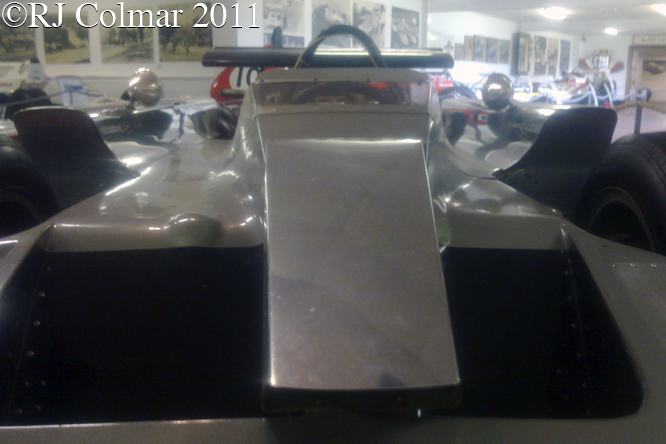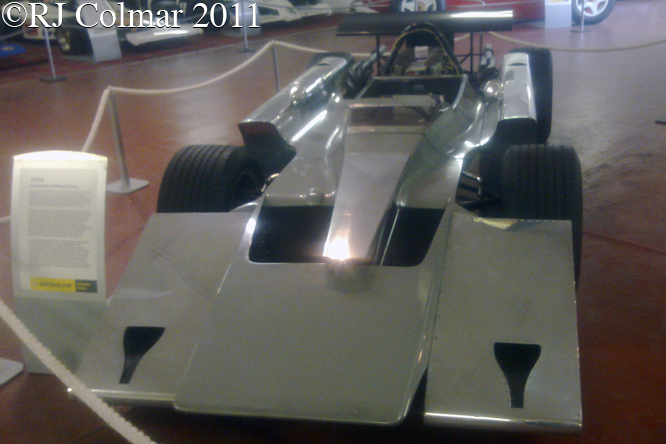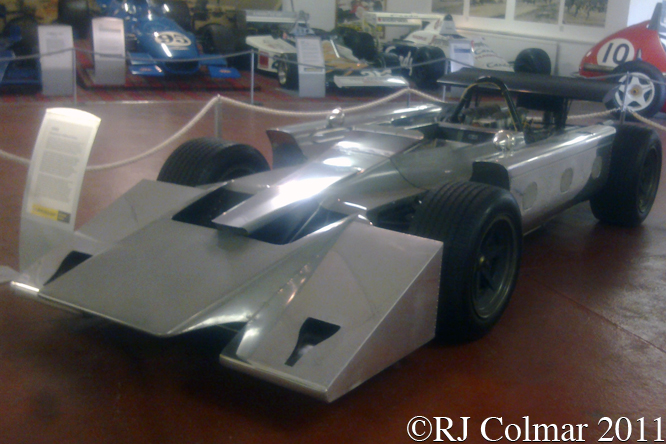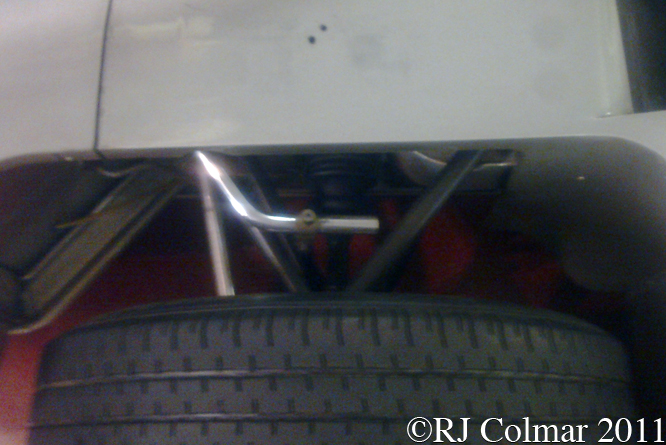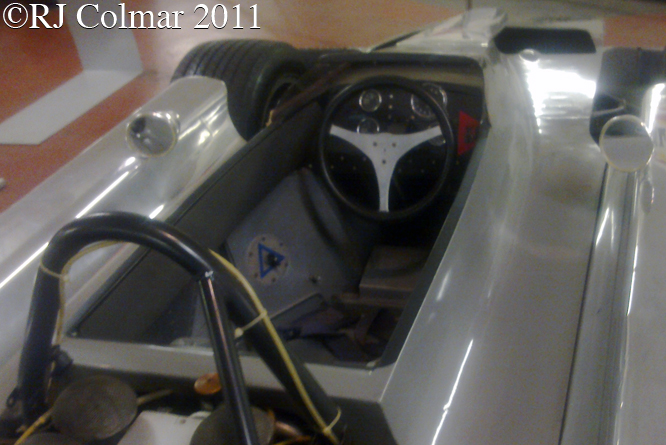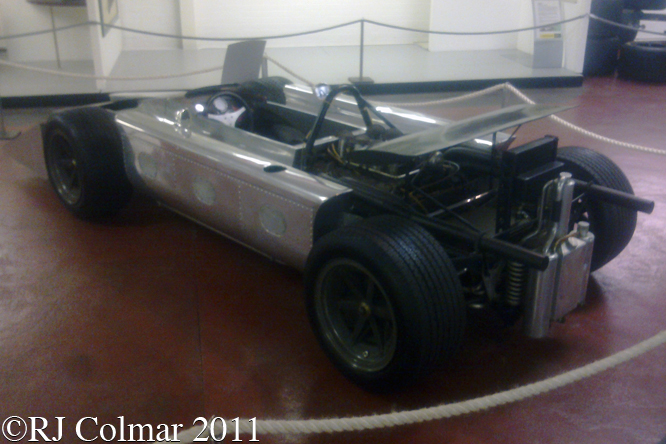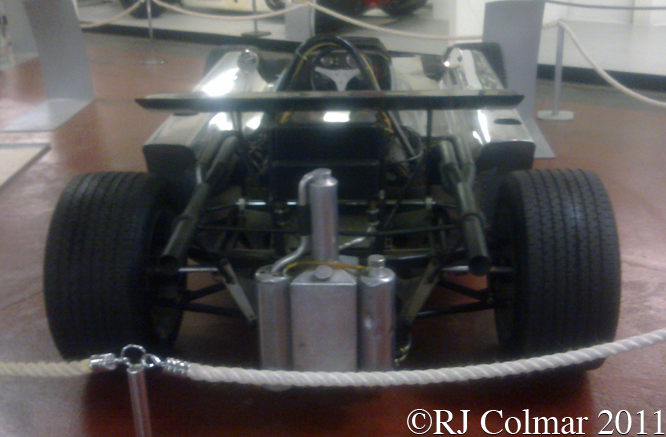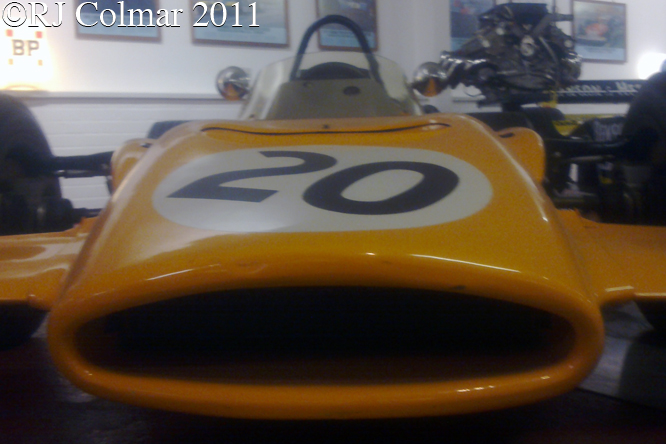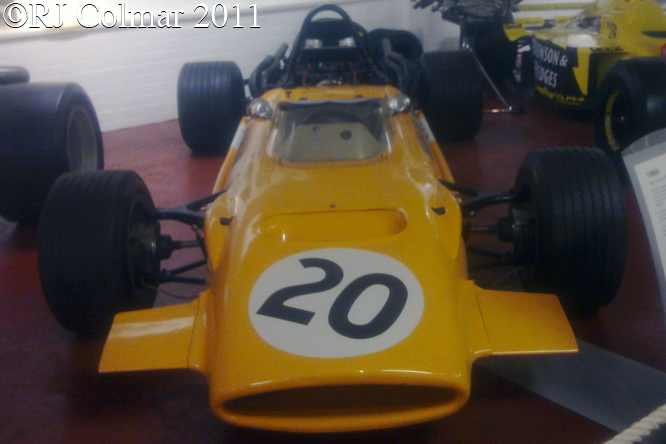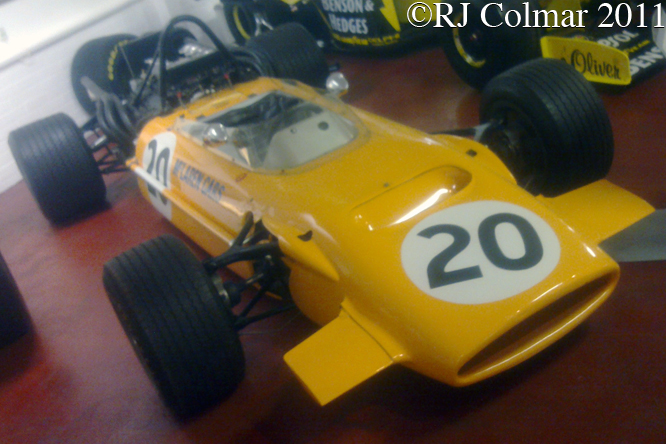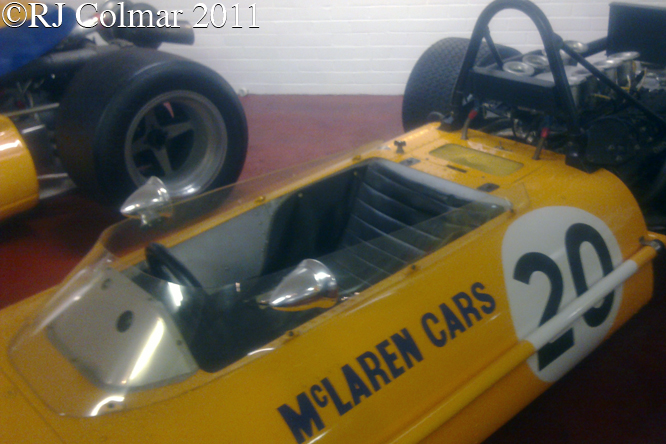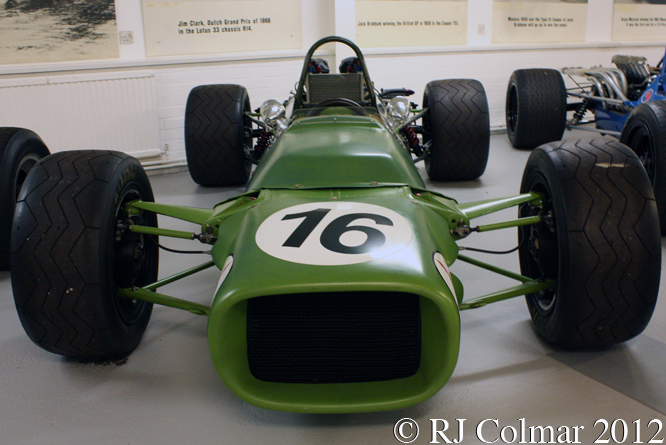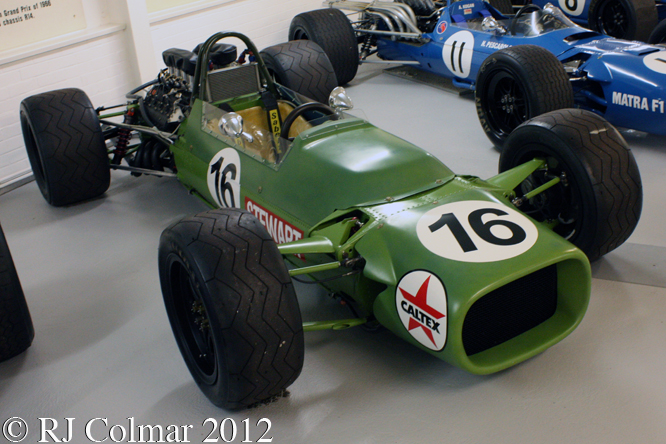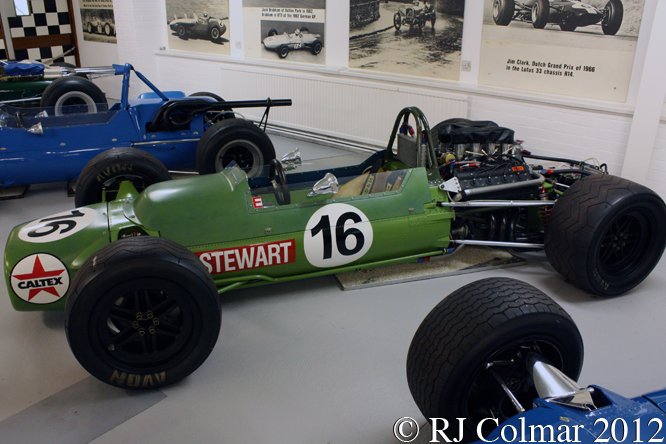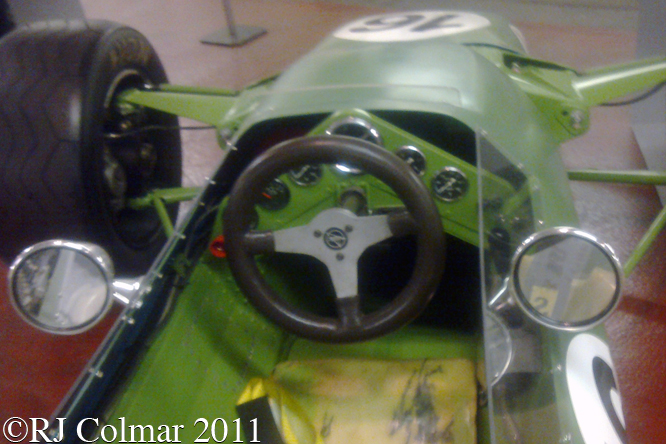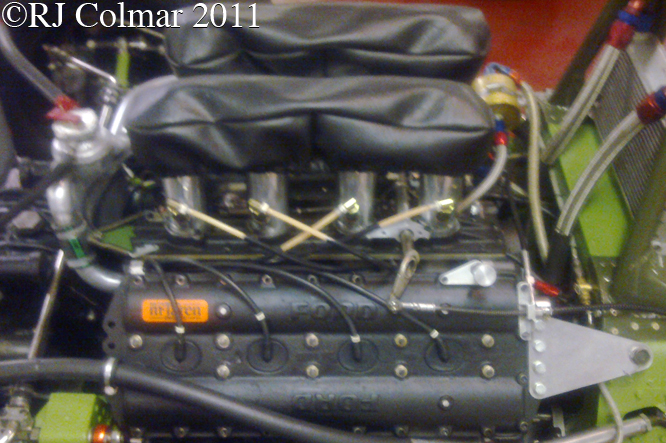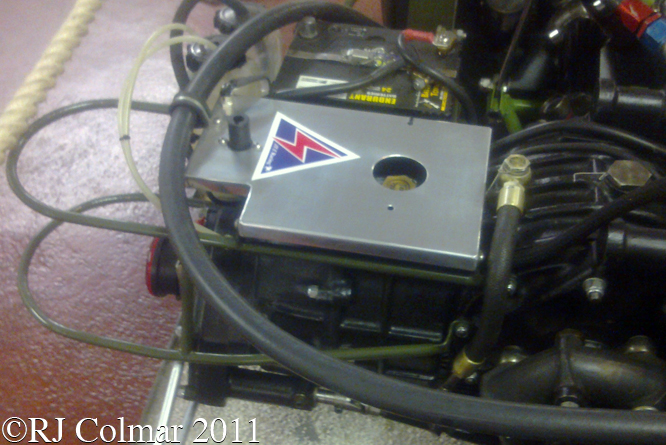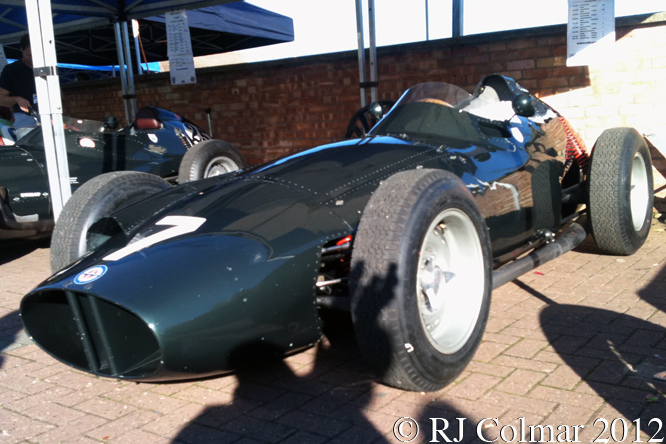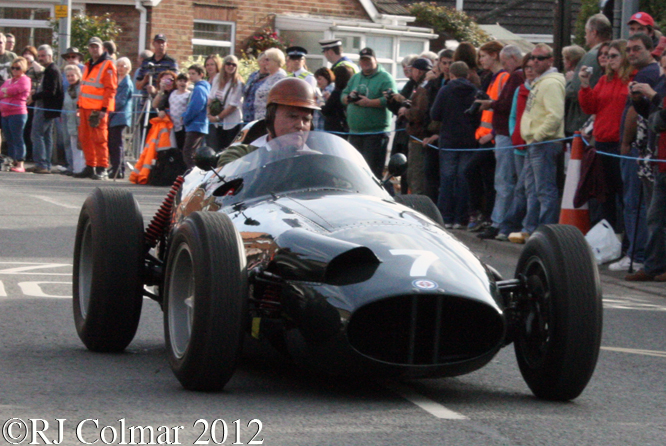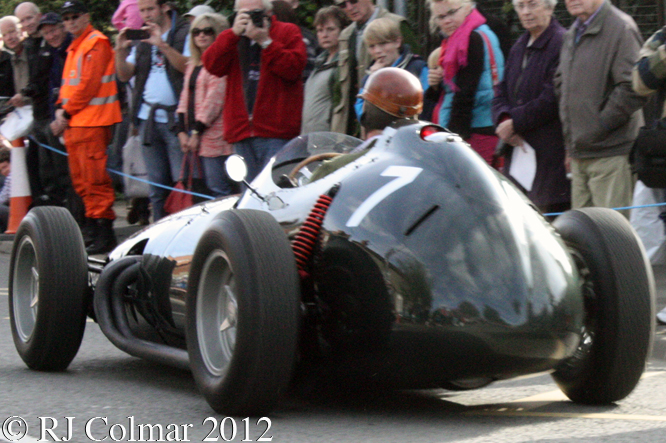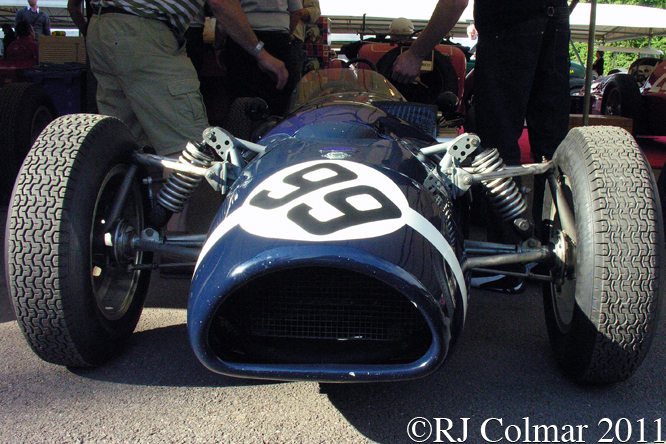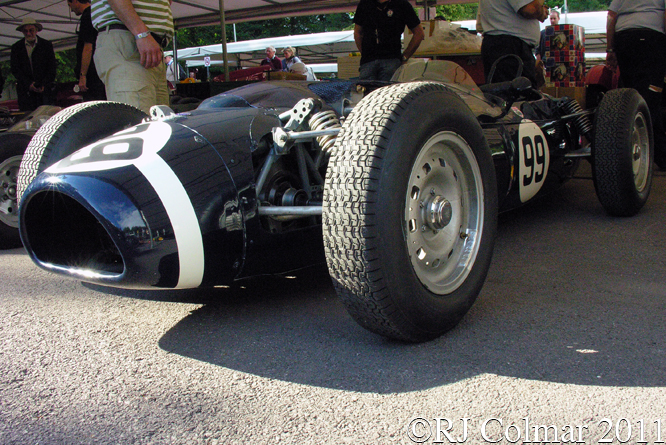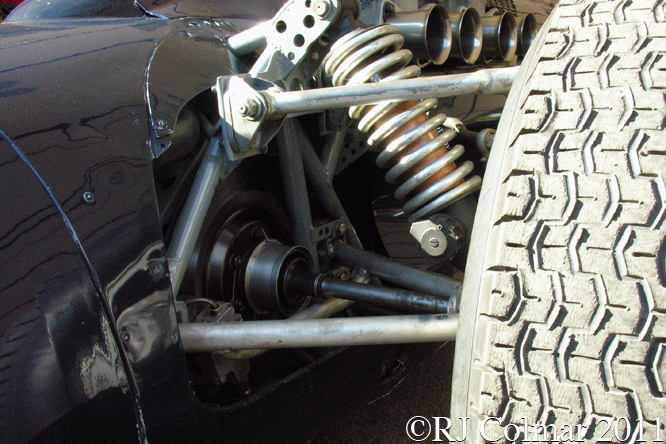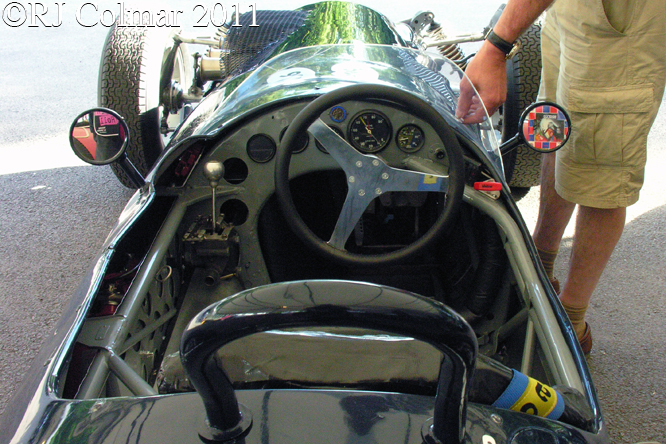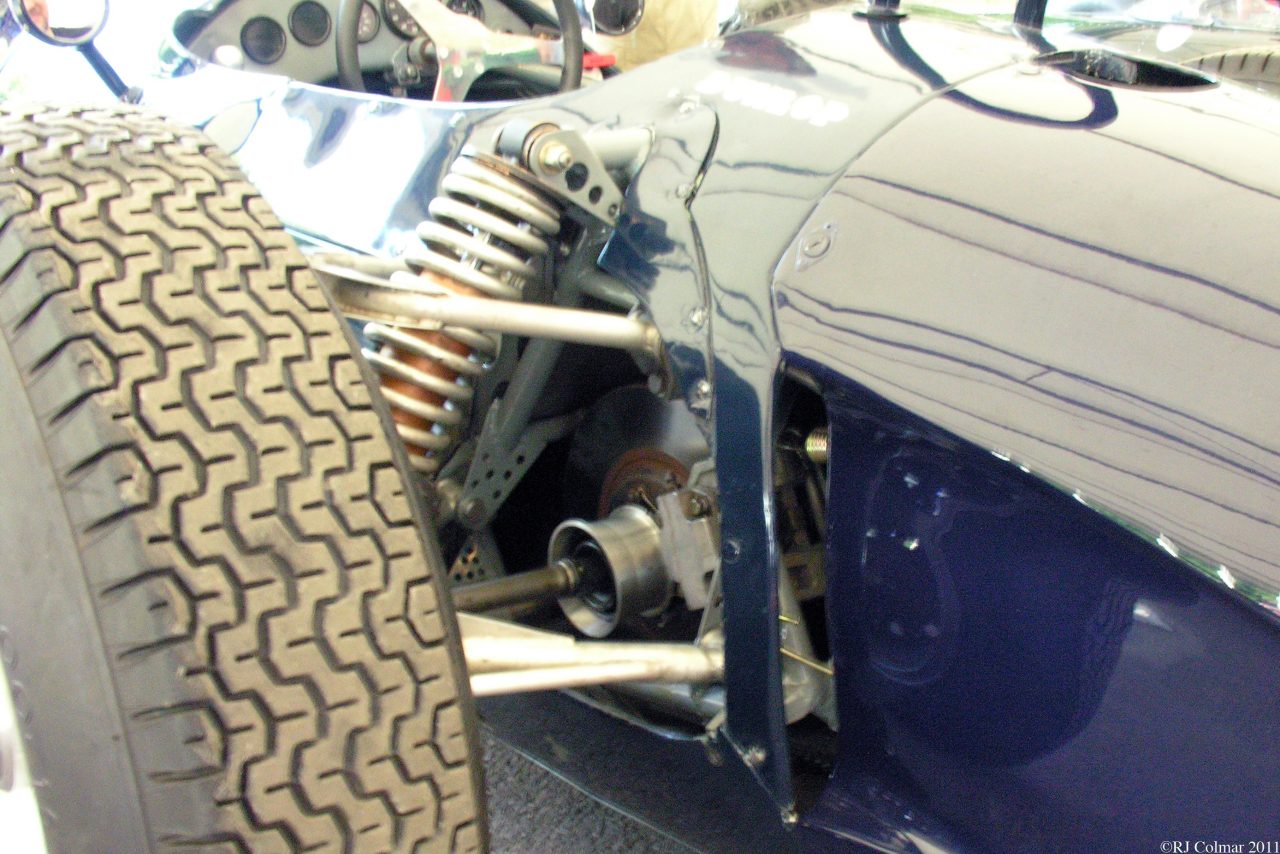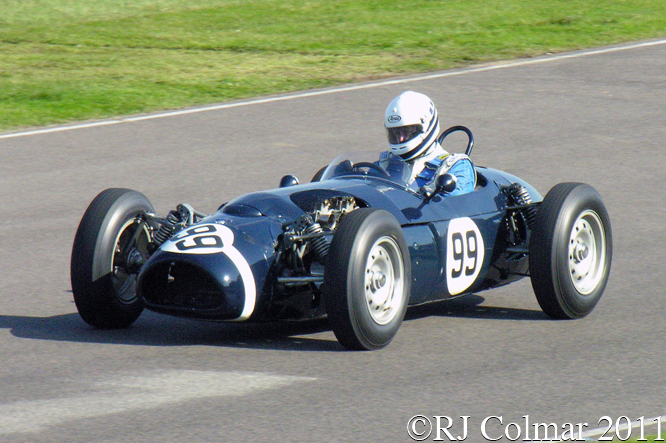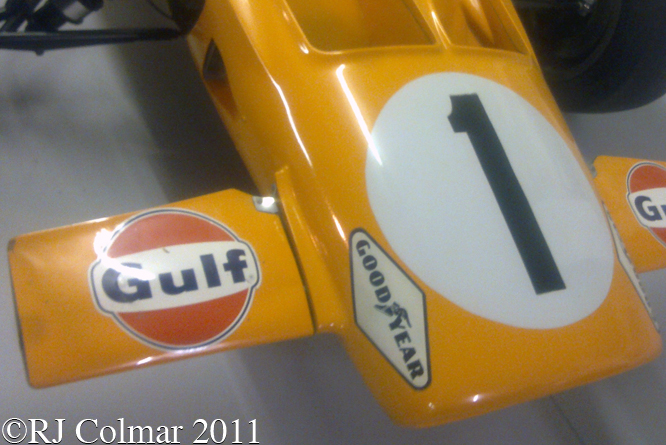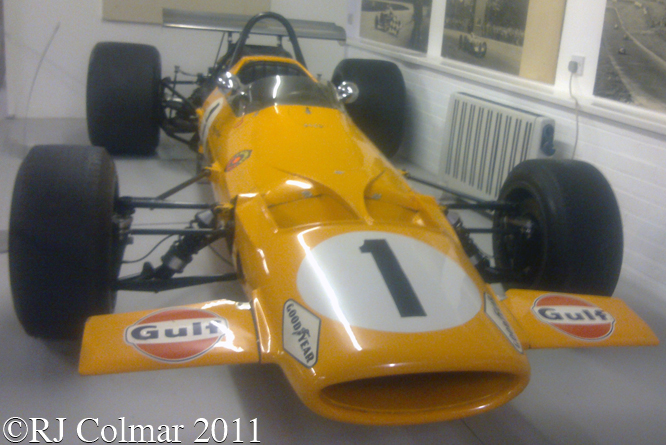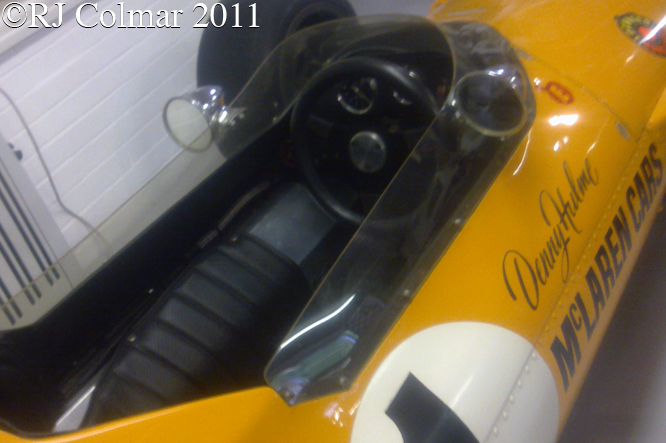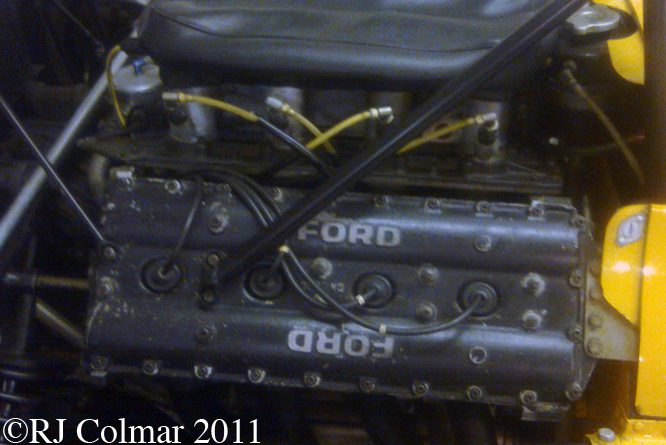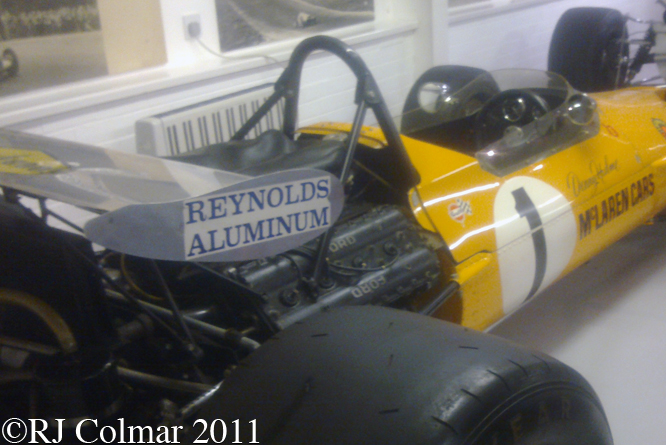In 1961 BRM were running late with their 1.5 litre 91.5 cui engine program to meet the new Formula One engine regualtions and so came up with an interim design the P48/57 which was powered by a proprietary Coventry Climax engine like most of the British ‘Garagiste’ teams. For 1962 their new V8 was ready and though it was no more powerful than the Coventry Climax the BRM V8 did rev to 11,000 rpm as against only 7,500 for the Climax. The space frame from the 1961 car formed the basis of the ’62 challenger which was known as the P578.
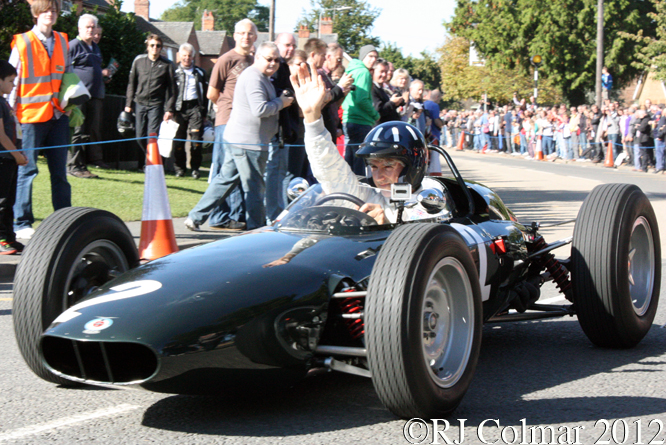
Richie Ginther joined incumbent Graham Hill on the BRM driving strength from ’61 World Champions Ferrari. The main challengers for the 1962 World Drivers and Constructors Championships emerged as BRM and Lotus who had introduced a revolutionary new Climax powered car the Lotus 25 which featured a sheet aluminium monocoque chassis in place of the space frame constructed from tubes as was common practice up to that time.
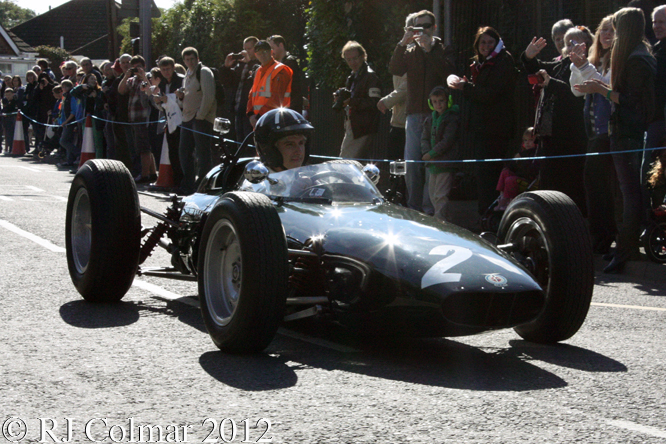
First blood in the 1962 season fell to Graham Hill in the Netherlands where Jim Clark finished last of the runners in 9th place 10 laps down in the new Lotus 25. Bruce McLaren won the Monaco Grand Prix in his Cooper Climax, the last win for the marque for three years until 1966. Jim Clark won for the first time in 1962 at the Belgian Grand Prix where he was followed home Graham Hill. The French Grand Prix saw a fourth different winner in the form of Dan Gurney who was driving a Porsche 804.
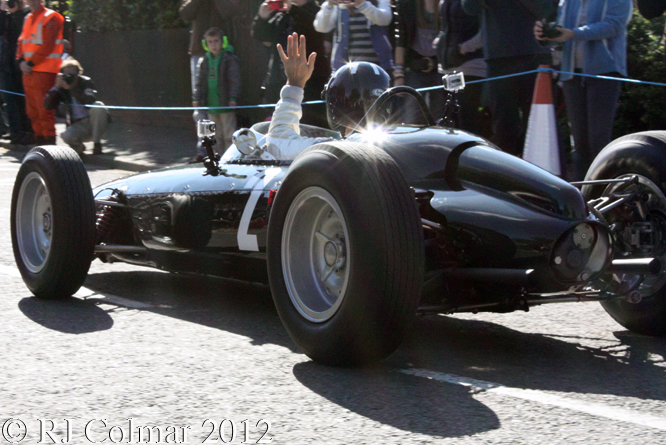
Jim Clark became the first repeat winner of the ’62 season when he won the British Grand Prix from John Surtees driving a Lola Climax Mk 4. Graham Hill then won the German Grand Prix again from Surtees in the Lola. In Italy Graham became the first three time winner in ’62 when he led team mate Ritchie Ginther across the line. At the ’62 US Grand Prix Clark led Hill home by nearly 10 seconds.
Going into the last race of the season the superior reliability of the less radical BRM meant that Jim Clarks only opportunity to win the ’62 Championship was to win the South African Grand Prix held in East London. Clark won pole with Hill alongside him and dominated the race until he developed an oil leak with 25 laps to go. Five laps later Clark retired leaving Graham to claim his fourth victory of the season and his first World Drivers Championship. BRM also won their only World Constructors Championship seventeen years after Raymond Mays had founded the team to build a “British World Beater“.
Today’s featured car BRM 578 chassis #P578/1 known as ‘Old Faithful’ was driven for much of the 1962 season by Graham Hill. The car which belongs Collier Collection in Florida is seen here at last years BRM Day being driven by Graham’s son 1996 World Drivers Champion Damon Hill.
Thanks for joining me on this “Britain’s World Beater” edition of “Gettin’ a li’l psycho on tyres” I hope you will join me again tomorrow. Don’t forget to come back now !


